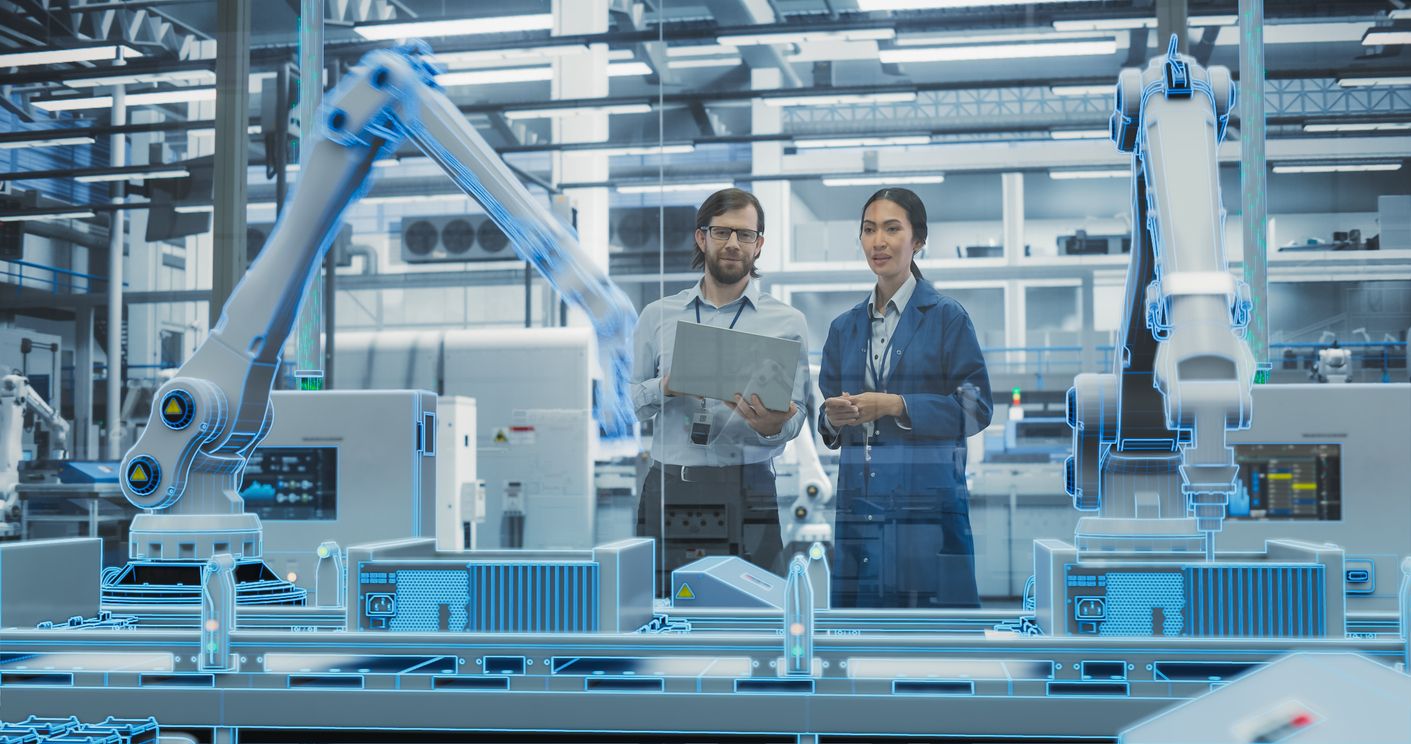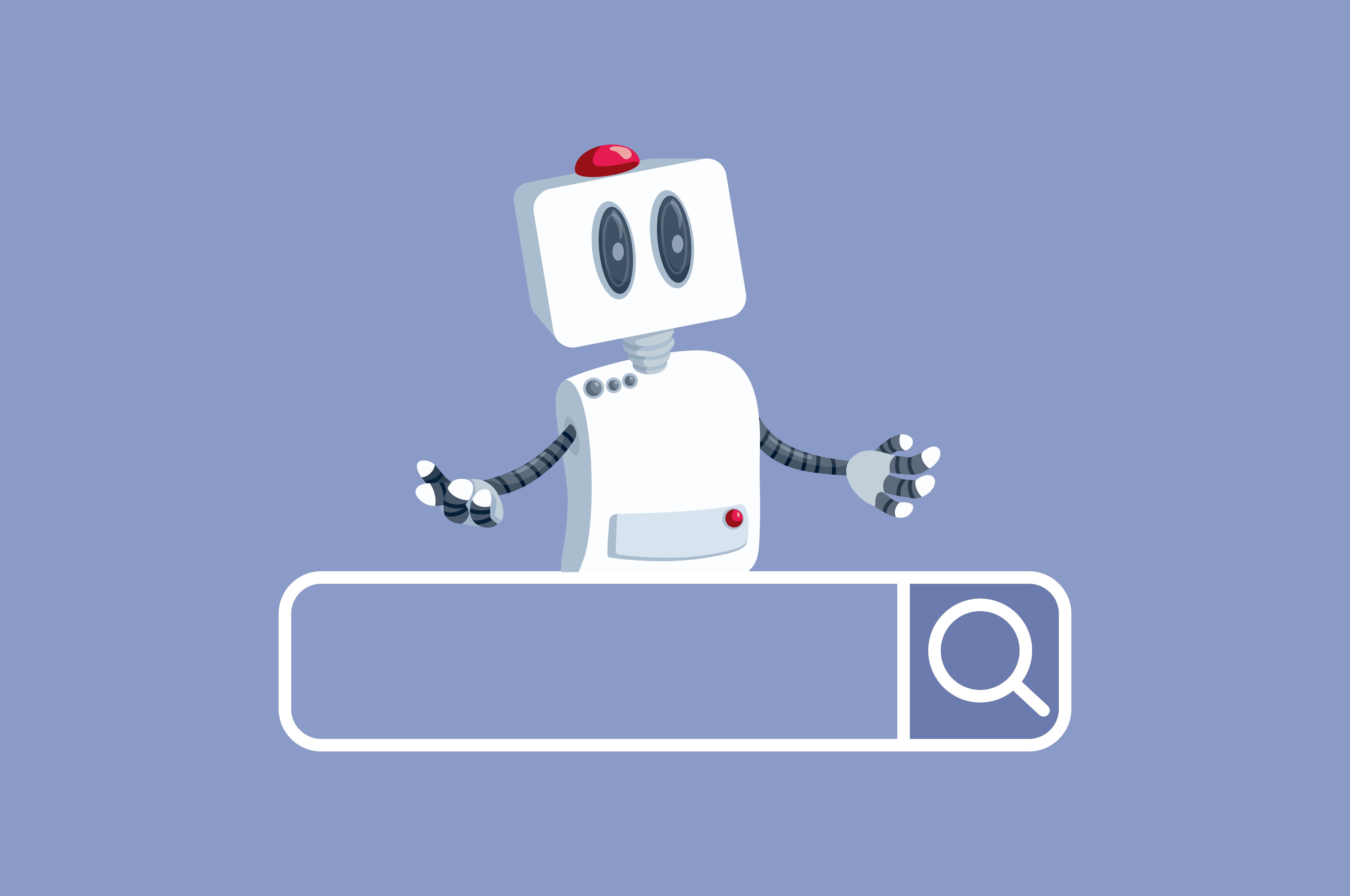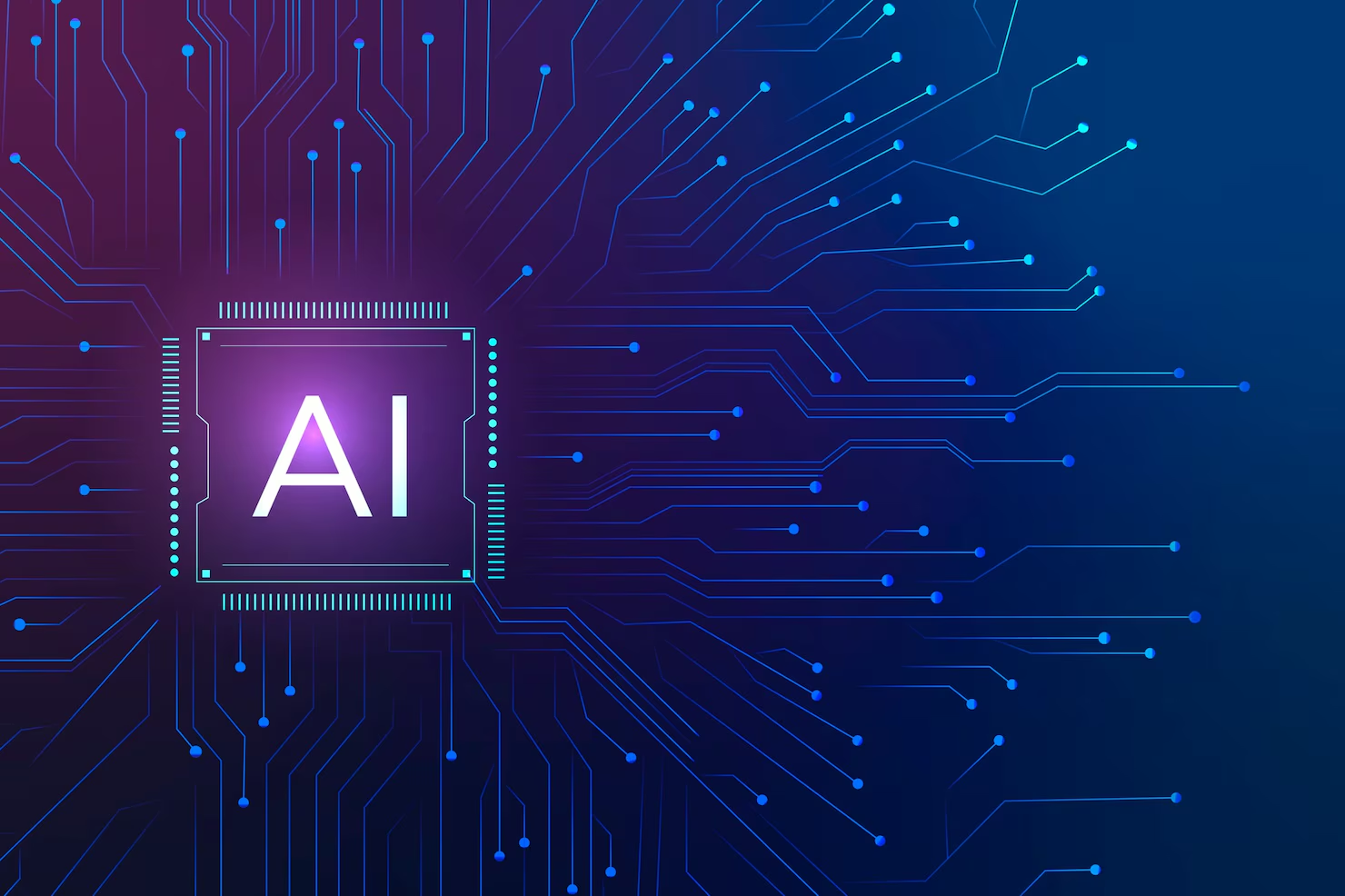Boosting Workplace Productivity with AI

Nathan Burkholder
Head of Business Development

A recent Gallup study found that only 36% of employees are truly engaged in their work, suggesting there’s a considerable productivity gap that businesses need to address to remain agile.
Artificial Intelligence (AI) is a powerful way to bridge this gap by automating routine tasks, providing personalized experiences, and facilitating smarter decision-making. Enhance decision-making with AI data analysis to gain deep insights and make informed choices.In fact, AI can cut down the time spent on administrative jobs by up to 40% by 2035 [1].
This guide has all the practical AI tips you need to supercharge your workplace productivity. Learn how to work smarter, not harder and see impressive gains in your daily operations.
Why Is Workplace Productivity Important?
High productivity in the workplace means achieving more with less effort and time, which translates to better outcomes for both employees and the company. AI can transform HR practices to improve employee engagement and streamline recruitment processes. Another Gallup report found that companies with high employee engagement are 21% more profitable.
But despite its importance, maintaining high productivity can be difficult to achieve.
Some common challenges include:
| Distractions and Interruptions | 70% of employees feel distracted at work, with 16% almost always distracted [2]. Whether it’s the constant ping of notifications, the lure of social media, or unnecessary meetings, such interruptions can considerably disrupt workflow. |
|---|---|
| Lack of Clear Goals and Priorities | Only 14% of workers fully understand their company’s strategy and direction [3]. This lack of clarity in goals can cause confusion and inefficiency among even the most diligent staff as they struggle to establish what’s truly important. |
| Inefficient Processes and Tools | Employees spend around 20% of their time searching for information or tracking down colleagues who can help with specific tasks [4]. Optimize business processes for greater productivity by addressing these inefficiencies and improving workflows. That’s a whole day every week lost because of inefficient processes. |
| Overwork and Burnout | Contrary to popular belief, more hours don’t necessarily mean higher output. In fact, pushing workers too hard can lead to burnout, deteriorating their well-being and causing increased absenteeism. |
| Remote Work Challenges | While remote work offers flexibility, figures suggest that it also can be a barrier to productivity. 11% of remote workers report struggling to unplug after work, while 8% state that collaboration and communication are more difficult [5]. |
Using AI For Workplace Productivity
AI comprises various technologies that allow machines to perform a variety of tasks that would otherwise require human intelligence.
- Machine Learning (ML): This is a way for systems to learn and improve from experience without being explicitly programmed. It gets better at predictions over time by analyzing data, thereby helping businesses anticipate trends and make informed decisions.
- Natural Language Processing (NLP): With NLP, machines can understand and respond to human language. It is used for chatbots, virtual assistants, and language translation services.
- Robotic Process Automation (RPA): By handling repetitive, rule-based tasks like data entry and transaction processing, RPA frees humans to focus on more complex activities.
- Computer Vision: This technology lets machines interpret and make decisions based on visual inputs from the surrounding environment, which is essential for quality control and surveillance systems.
Benefits of AI in the Workplace
These are some of the standout benefits of integrating AI in the workplace:
- Increased Efficiency: By taking over repetitive tasks and doing them quickly and accurately, AI can boost workplace productivity. In turn, it could increase global GDP by up to 14% by 2030 [6].
- Enhanced Decision-Making: Businesses gain deep insights into their operations. In fact, by 2025, AI will be involved in nearly 95% of all customer interactions, enabling smarter decision-making and better customer satisfaction [7].
- Personalized Experiences: These are tailored to individual needs, whether for customers or employees. Personalized learning platforms, for example, adapt to each user’s learning style to help boost engagement and retention.
- Improved Accuracy: Because they are less prone to errors compared to humans, especially with large datasets, AI systems achieve higher accuracy and fewer mistakes.
- Cost Savings: Automating routine tasks can substantially cut operational costs, delivering up to $4.4 trillion in estimated value [8].
Examples of AI For Workplace Productivity
Thanks to its flexibility, AI can be applied in many ways to supercharge workplace productivity, such as:
- Automated Customer Support: Chatbots and virtual assistants can handle customer inquiries 24/7, providing instant responses and enabling human agents to tackle more pressing issues. As such, research by Tidio found that 62% of consumers would rather talk to a chatbot than wait longer for a human agent.
- Smart Project Management: Tools like Asana and Trello are integrating AI to keep teams on track and ensure deadlines are met through automated task management, project timeline predictions, and optimized resource allocation.
- Predictive Maintenance in Manufacturing: AI algorithms analyze data from machinery to predict failures before they occur. Such predictive maintenance can reduce breakdowns by up to 70% and decrease maintenance costs by up to 25% [9].
- Personalized Training Programs: Learning platforms, such as Coursera and Udacity, offer personalized training programs tailored to individual learning preferences and career goals in order to increase engagement and help employees upskill more effectively.
- Enhanced Recruitment Processes: 67% of hiring managers and recruiters say AI is saving them time in the hiring process due to its screening of resumes, scheduling interviews, and even conducting initial interviews using chatbots [10].
- Automated Routine Tasks: Tools like UiPath and Automation Anywhere are enabling businesses to automate routine operations such as invoice processing and payroll management. Meanwhile, scheduling assistants like x.ai and Clara streamline calendar management by setting up meetings and reminders without human intervention.
- Effective Communication: AI can reduce the time spent on email management, which is estimated to be about 28% of the average workweek, according to McKinsey. Additionally, by improving collaboration and speeding up response times, it helps teams stay aligned on their goals.
- Resource Allocation: It can predict resource availability, identify potential bottlenecks, and suggest optimal scheduling solutions so that projects proceed smoothly. This means that each team member's skills and availability are utilized to their fullest potential, preventing burnout. Companies that implement AI for resource management see a 27% improvement in project success rates [11].
- Employee Well-Being: AI can now monitor stress levels and provide mental health support to employees so that they’re productive, happy, and healthy. Ginger and Woebot are two tools that use NLP to provide immediate assistance and coping strategies. Such services are vital for talent retention, as 57% of employees who are unsatisfied with mental health support state that they intend to look for a new job [12].
- Fraud Detection: Businesses can detect fraud in real-time by analyzing transaction patterns, adding a vital layer of security. In fact, McKinsey found that AI can reduce fraud-related costs by up to 50%.
The Future of AI in Workplace Productivity
As AI technologies advance, their potential to transform workplace productivity is growing by leaps and bounds. Here’s how:
Emerging AI Technologies
| Generative AI | Technologies like OpenAI’s GPT-4 are leading the way in creating all sorts of content, from text, images, music, and even code. Gartner predicts generative AI will produce 10% of all data by 2025, up from less than 1% today. |
|---|---|
| Augmented Reality (AR) and Virtual Reality (VR) | AR and VR are set to transform training, collaboration, and design. As a result, by 2030, it will give an estimated $1.4 trillion boost to the global economy [13]. |
| AI in Cybersecurity | Security systems can analyze vast amounts of data in real-time to identify potential threats and respond swiftly in an era where cyber threats are becoming increasingly sophisticated. |
Potential Impacts on Various Industries
Its power translates across all industries, with each sector reaping its benefits in unique ways.
Healthcare
All in all, AI could save the healthcare industry up to $150 billion annually by 2026 through efficiencies in data management, workflow automation, and personalized patient care [14].
- Predictive Analytics: The ability to predict patient outcomes, detect diseases early, and recommend preventive measures. IBM Watson Health, for instance, uses AI to analyze medical records and provide personalized treatment recommendations.
- Personalized Treatment Plans: Individualized treatment plans based on patient data will improve outcomes and reduce side effects. Such precision medicine initiatives, driven by platforms like Tempus, analyze genetic information for targeted therapies.
- Robotic Surgeries: Robotic systems such as Intuitive Surgical's da Vinci can enhance the precision and safety of surgeries, allowing for minimally invasive procedures and faster recoveries.
Retail
There could be a 59% increase in profitability across the entire retail and wholesale sector by 2035 [15].
- Personalized Shopping Experiences: Ever wondered how your favorite online store seems to know exactly what you want? It's because they analyze customer behavior to offer tailored recommendations. Amazon's recommendation engine, for example, accounts for 35% of its sales by suggesting products based on past purchases and browsing history [16].
- Optimized Supply Chains: Supply chains are managed by predicting demand and optimizing inventory, thereby reducing waste.
- Customer Service: Sephora's AI chatbot provides personalized beauty advice and product recommendations round-the-clock, in turn, improving response times and satisfaction.
Finance
Through improvements in fraud detection, risk management, and customer service, revenue within the banking sector could accelerate by an average of 38% by 2035 [17].
- Fraud Detection: PayPal examines patterns to monitor transactions and flag suspicious behavior, reducing fraud considerably.
- Risk Management: Financial institutions make better decisions by having access to a wide range of data sources and gaining accurate risk assessments.
- Personalized Financial Services: Robo-advisors like Betterment and Wealthfront offer personalized investment advice, tailored to individual financial goals and risk tolerance.
Manufacturing
The World Economic Forum estimates that AI in manufacturing could grow to $20.8 billion in value by 2028 through improvements in efficiency, quality, and innovation [18].
- Automation: Siemens uses robotics in its "lights-out" factories to maintain a constant production process, thereby reducing labor costs and human error. For example, robots handle tasks such as assembling products, material handling, and quality inspection.
- Predictive Maintenance: The technology monitors industrial equipment by predicting when maintenance is needed, preventing unexpected breakdowns and reducing downtime.
- Quality Control: Companies like BMW inspect products in real-time, identifying defects that human inspectors might miss, to ensure that their vehicles meet the highest quality standards.
How Businesses Can Prepare for AI Integration
Embrace these strategies and prepare thoughtfully to position your business at the forefront of productivity gains.
Invest in AI Literacy
- Training Programs and Workshops: Providing training on the fundamentals can help demystify AI and build confidence in using these technologies.
- Continuous Learning: Encourage subscriptions to journals, attend conferences, and participate in webinars to help keep your team updated on the latest advancements and best practices.
Start Small and Scale
- Pilot Projects: Begin with small-scale projects before a full-scale rollout to identify potential challenges and develop solutions in a controlled environment. For example, starting with chatbots for customer service can provide quick feedback.
- Iterative Scaling: Use the learnings from pilot projects to gradually scale implementations across different departments so you can better manage risks and have a smoother transition.
Leverage Data
- Robust Data Collection: AI is all about data, so make sure yours is accurate, relevant, and up-to-date.
- Data Governance: Establish clear governance policies to maintain data quality and integrity. This includes data cleaning, privacy regulations compliance (such as GDPR), and secure storage.
Collaborate With Experts
- Partnering With AI Vendors: Work with AI vendors and consultants who have the expertise in the latest tools and technologies suited for your business needs.
- In-House AI Specialists: Consider hiring or training in-house specialists who can manage and maintain your systems. They can work alongside external partners to facilitate a smooth integration and ongoing optimization.
Foster an Innovation Culture
- Encourage Experimentation: Allow employees to explore new ideas and approaches for integrating AI into workflows through innovation labs or dedicated time for creative projects.
- Supportive Leadership: Leadership should provide the necessary resources and create an environment that embraces change. Transparent communication about the benefits and challenges of AI can help in gaining employee buy-in.
Ethical Considerations and Transparency
- Ethical AI Use: Establish fair and transparent guidelines for ethical AI use, such as addressing biases in algorithms and ensuring decisions made by AI are explainable.
- Transparency with Stakeholders: Be transparent with stakeholders about how AI is being used and its impact on business processes. This builds trust and makes sure that all parties are on board with the integration strategy.
Performance Monitoring and Continuous Improvement
- KPIs and Metrics: Define clear Key Performance Indicators (KPIs) and regularly review these metrics to assess performance and make necessary adjustments.
- Feedback Loops: Establish feedback loops where users can provide input on the systems’ effectiveness and improve accordingly in line with business objectives.
Boost Your Workplace Productivity With AtlasUP

Interruptions from status updates and getting bogged down searching for scattered data. Time-consuming tasks like these can be a thing of the past with Atlas UP. We’re an AI SaaS company with an aim to accelerate your business insights using your company's real and relevant data.
Why Does Your Business Need Atlas UP?
- Integrated Platform: Atlas UP seamlessly integrates with your internal systems across HR, Finance, Sales, and Project platforms, so all your critical data is at your fingertips. Through Large Language Models and Natural Language Processing, we create a partnership between humans and AI that revolutionizes business productivity.
- Swift Answers and Enhanced Productivity: Our platform delivers instant answers to your business queries, freeing your team from the constant interruptions of providing updates, so they can focus on high-impact tasks.
- Data Security: We employ SOC 2 Type II and GDPR-compliant practices to make sure your data is encrypted both at rest and in transit. We use OpenAI's API for advanced natural language processing, with strict data privacy assurances.
- Early Access to Cutting-Edge AI Technologies: When you join our beta program, you gain early access to the latest technologies tailored for business data analysis. This includes personalized support from AI experts who can help you understand and leverage them to their fullest potential.
- Personalized Support and Continuous Improvement: We provide personalized expertise, guiding you through the integration process so you get the most out of our platform. Your feedback is invaluable, directly helping us refine our product’s capabilities.
Equip your team with powerful AI tools that provide actionable insights and drive productivity. Schedule a demo today and discover how Atlas UP can shape your organization’s future.
Final Thoughts
You've learned how AI can supercharge your workplace productivity by automating tasks, streamlining communication, and enhancing project management. Now, how can you harness its capabilities within your business to reduce inefficiencies, improve accuracy, and empower your team?
If you're ready to take your workplace productivity to the next level, explore the powerful AI solutions offered by AtlasUP and schedule a demo now.
Frequently Asked Questions
What is productivity in the workplace?
Workplace productivity is about getting tasks done and meeting goals efficiently and effectively. It means using your time and resources wisely to achieve the best results, so you’re not just working harder, but working smarter.
How to increase productivity in the workplace?
To boost productivity at work, try simplifying workflows and setting clear, achievable goals. Use tools like AI to automate routine tasks and make sure your team has what they need to stay motivated and focused in a supportive environment.
What are the 4 pillars of productivity?
The four pillars of productivity are clarity, focus, energy, and tools. Clarity means knowing exactly what you need to do, focus is about staying on task without distractions, energy involves keeping yourself physically and mentally fit, and tools refer to using the right resources and technology to help you work more efficiently.
What is an example of workforce productivity?
An example of workforce productivity is when a team uses project management tools like AtlasUP to keep their tasks organized and streamline communication. This helps them finish projects more efficiently and with fewer mistakes, so they get more done in less time.
Ready to experience the integration of AI and business like never before?
Discover the ease of bringing AI to every corner of your company.
Schedule DemoRead more from our blog

How Intelligent Workplace Solutions Can Help Employees Boost Productivity

Nathan Burkholder
Head of Business Development
Atlas UP answers everything so you can keep building.

